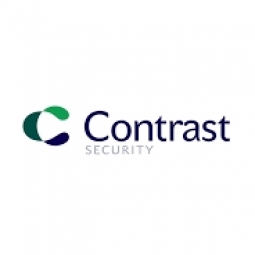Technology Category
- Application Infrastructure & Middleware - Event-Driven Application
- Cybersecurity & Privacy - Application Security
Applicable Industries
- E-Commerce
- National Security & Defense
Applicable Functions
- Procurement
- Product Research & Development
Use Cases
- Tamper Detection
- Time Sensitive Networking
Services
- Cybersecurity Services
- System Integration
About The Customer
Tillster is a privately held e-commerce company and a global leader in self-service digital ordering, improved customer insights, and guest engagement. The firm empowers casual dining and quick service multi-tenant restaurants and consumers to engage and transact anywhere, anytime, from any device. The company provides multi-channel, market-specific digital solutions for ordering, payment, loyalty and lifestyle management that integrate across online, mobile, tablet, kiosk and call center platforms. Tillster has partnerships with over 100 restaurant brands, supporting more than 40,000 locations, and providing over 35,000,000 digital orders per year. Some of its most noteworthy clients include the world’s leading brands such as Pizza Hut, Arby’s, Burger King, and Steak ‘n Shake.
The Challenge
Tillster, a global leader in self-service digital ordering, faced the challenge of improving and simplifying its application security. The company needed to incorporate a more active and dynamic vulnerability assessment system to ensure the security of its applications. The challenge also included providing guidance to Tillster’s DevOps team to achieve optimal protection within the entire Software Development Life Cycle (SDLC). The company had to balance internal and external practices, comply with OWASP’s top 10 application security risks and mobile application guidelines, and run scans and penetration tests to meet PCI standards. Patch management was critical for keeping Tillster’s applications safe, as 99% of software exploits are based on known vulnerabilities. Furthermore, Tillster had to deliver secure software on schedule, ensuring that security issues did not cause delays and that the software in production did not pose a risk to restaurants or consumer data.
The Solution
Tillster adopted Contrast Assess, a solution that enabled the company to effectively and efficiently maintain its applications such as Java and .NET without traditional legacy-based scanning or the need for expensive security experts. Contrast Assess allowed Tillster’s 75+ developers to address security issues during the development process, when the cost of doing so is lower. This solution helped Tillster find the latest code changes to improve application security systems and networks. It supported Tillster’s secure development processes by operating inside applications to uncover vulnerabilities, prevent data breaches, and provide security throughout the entire application lifecycle. As a result, Tillster’s developers had the tools to rapidly solve security problems wherever and whenever they arose.
Operational Impact
Quantitative Benefit

Case Study missing?
Start adding your own!
Register with your work email and create a new case study profile for your business.
Related Case Studies.

Case Study
Data Capture for Afghanistan Forces
Electronic equipments on the field of Afghanistan provided information on the status of the vehicle and to identify potential threats surrounding it to the British Force. The monitoring and interpretation of this data requires robust and sophisticated digitization for data capture and communication.

Case Study
Digital Transformation of Atlanta Grout & Tile: An IoT Case Study
Atlanta Grout & Tile, a Tile, Stone & Grout restoration company based in Woodstock, Georgia, was facing challenges with its traditional business model. Despite steady growth over the years, the company was falling behind the web revolution and missing out on the opportunity to tap into a new consumer base. They were using independent software from different vendors for each of their department information and workforce management. This resulted in a lot of manual work on excel and the need to export/import data between different systems. This not only increased overhead costs but also slowed down their response to clients. The company also had to prepare numerous reports manually and lacked access to customer trends for effective business decision-making.
Case Study
Enhancing Security and Compliance in Remitly's Global Money Transfer Service with Fastly
Remitly, an online remittance service, was faced with the challenge of securing its proprietary global transfer network. The company needed a security solution that could meet PCI requirements and protect customers' sensitive transactions through its mobile application. The solution had to be capable of defending against new and emerging attack types without impacting performance. Remitly also had to deal with irregular traffic patterns, such as a sudden spike in account transfers from a small network segment on the Pacific coastline of South America. The company needed to determine in real time whether such traffic indicated an attack or valid requests. A traditional web application firewall (WAF) would not be able to distinguish this traffic, potentially leading to customer frustration if the IP was blacklisted.

Case Study
Major Aerospace Company Automates Asset Management
The O&M division of an aerospace and global security company was using spreadsheets to manually track more than 3,000 assets assigned to students and staff. Maintaining audit trails for this high volume of equipment became increasingly time-consuming and challenging. The chore involved knowing precisely what equipment was on hand, what had been issued, its location and the name of the custodial owner of each item. Every aspect of this task was carried owner of each item. Every aspect of this task was carried out by individuals with spreadsheets. Manually documenting the full lifecycle of each asset added to the burden. This included tracking maintenance requirements and records, incidents and damages, repairs, calibrations, depreciation, and end-of-life data.

Case Study
IFFCO Boosts IT Performance and Innovates Agriculture with Oracle Cloud
Indian Farmers Fertiliser Cooperative Ltd. (IFFCO), the world’s largest manufacturer and marketer of fertilizers in the cooperative sector, was facing several challenges in its quest to innovate and improve the livelihood of farmers in India. The organization had recently launched a new product, nano urea, which brought new demands to IFFCO’s cloud computing needs. The organization needed a reliable cloud vendor to support the processes of 6–7 new manufacturing plants during the upcoming year, enhancing its production capability 300–350 million bottles of nano urea to meet increasing demand. IFFCO’s cloud adoption was driven by a need to innovate. The organization wanted capabilities for a dynamic business that can adapt to the changing needs of the market while growing fast. However, it was inhibited by rigid on-premises data center deployments and the overhead of maintaining legacy systems. IFFCO wanted to apply the elasticity and availability of cloud for improving overall performance of applications at lowest possible operational overhead. Lastly, IFFCO needed to provide the benefits of its technology to all its stakeholders, including employees, members, transporters, and farmers, some of whom have limited literacy. To accommodate all stakeholders, IFFCO wanted to add a voice interface to its applications.

Case Study
Securing a Large Data Center in the EMEA Region: An IoT Case Study
A leading data-center operator in the EMEA region, with multiple facilities spanning over 25,000 square meters, faced significant security challenges. The operator experienced interruptions in their internal IT network due to unsupervised work of third-party technicians. Despite having a high-end building control system that provided 24x7 monitoring and control to all the building’s infrastructure, the data center was vulnerable from a cyber perspective as it was connected to the IT network infrastructure. The operator launched an urgent OT cyber security project that included both IT-OT network segmentation and OT network asset mapping and anomaly detection. The main objectives were to harden the security of the server systems, secure the facility’s power supply and server cooling system, strengthen the segmentation between building and operational systems, create a visual OT network map, and set up a system for presenting supply-chain attacks that may threaten the data center through equipment vendors’ maintenance activities.







